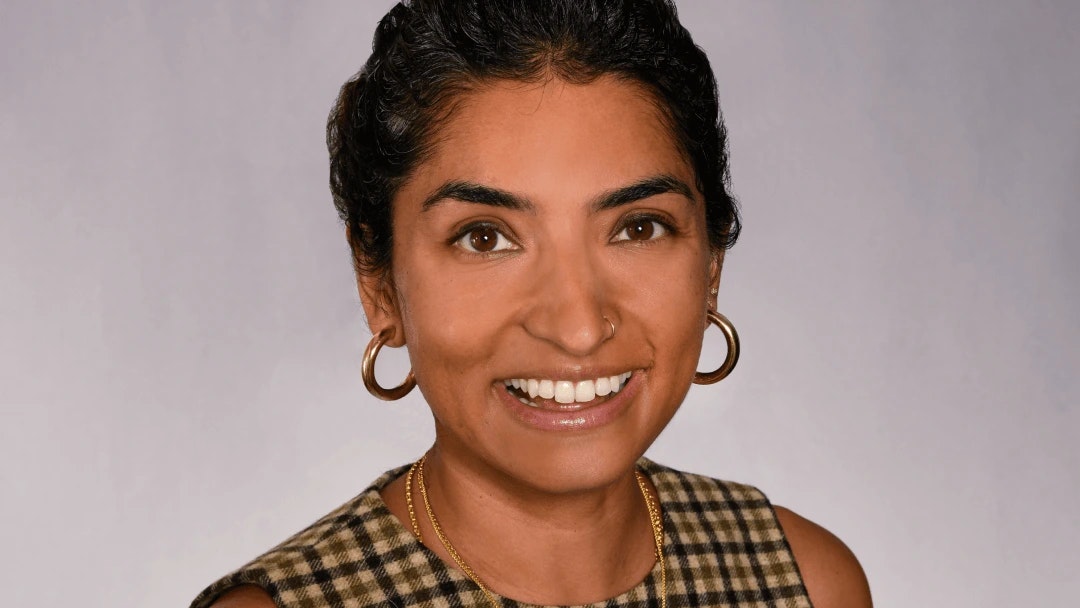Listen on Apple Podcasts, Spotify, or your favorite podcast app.
This week’s Future of Fintech is on the future of B2B lending fintech, covering why many of the previous B2B lenders failed, what's changed, how shifting regulations will impact this space, if B2B lenders are competing with VC financing, and more.
Future of Fintech is hosted by Immad Akhund, founder and CEO of Mercury, and Sheel Mohnot, Partner at Better Tomorrow Ventures.
Guests for this week include:
Highlights from Future of Fintech: B2B Lending
This interview has been lightly edited for length and clarity.
What's different in the new wave of B2B lending, led by companies like Clearbanc and Chapchase?
ANDREW (Clearbanc CEO): We had wave one of online lending, making the traditional offline lending and underwriting process more accessible by bringing it online. That was great from a distribution standpoint, but the products weren't that different. They still had to underwrite and validate assets. And for small businesses, the product structures typically required a personal guarantee. That limited what we could do.
At Clearbanc, we've focused on online businesses. For the first time, those businesses can scale infinitely with the right type of capital. Offline businesses always raised traditional debt, and online businesses always raised equity. We've tried to design a financial instrument that sits between debt and equity, and uses online business data to project what revenue could look like, and gets paid back out of a revenue share.
Part of it is the type of customers that we focus on. Part of it is a product structure that allows us to not have to focus on assets, and instead focus on more of an equity-like structure and risk profile for the founders.
What types of expenses are good to use debt for versus equity?
MIGUEL (Capchase CEO): Things that are going to have returns in less than 12 months may make sense to finance with debt, because it's a relatively quick return. Things that have much longer returns make sense to finance with equity. You can have the big pools of cash that you're betting on the moonshots and don't expect you can get back quickly.
JASON (SalesRabbit CFO): Debt does a good job of leveraging realized value or assets inside of your business. The longer you're trying to leverage something, or use something to get capital or build towards R&D, I think it's much more difficult. If you've got assets to point to on your balance sheet, it's much easier to access debt, and it's probably a safer bet to use debt in those circumstances versus filing some of the equity needs that are not quite realized value.
Are modern lending companies similar to banks because they have capital requirements? Or is it a different ball game?
NELLIE (SciFi VC Partner): There are drastically different amounts of underwriting data. You can now count on much better underwriting data, which enables new companies to be more targeted and stronger. The earlier players in the B2B lending were more horizontal. Now there is more vertical fragmentation.
They are emerging to finance anything from contracts to inventory; that can significantly change the economics of the business. If you think through the important components of the lending business, you have your cost of capital, your cost of user acquisition, and your underwriting costs. If you know your segment in great detail, you can target your user acquisition and control your underwriting a lot better to significantly improve those economics. This has largely been enabled by all the data available.
The second point is that one can approach the lending business from the perspective of just the cost of capital, which is a race to ever-compressing margins. That race is never over. One way to differentiate on a lending product is actually on product. You want to embed further into the business and make yourself indispensable. Knowing your customer provides a whole suite of unique advantages from underwriting to additional revenue streams. That takes you out of just lending revenue and into any fintech revenue where you can own the full FinOps stack and build on that.
There was an explosion in retail trading this year, e.g. with GameStop. Do you think people should trade individual stocks? Do customers demand that?
YINON (Albert): It's bad for customers to put all their assets into individual stocks and gamble. However, when people want access to markets, they want access to individual stocks. Can you nudge the customer in a direction that's responsible? Can you get somebody to put aside 70% of their investments into an automated, intelligent portfolio and have them invest the rest? That's natural. It's unnatural to tell somebody, "Eat your veggies, but no dessert.”
People know when everybody around them is participating in the new euphoria, whether it's GameStop or crypto. If you say, “no, you're not allowed to participate [in individual stock trading],” the customer will end up not participating in your service at all, which means you can’t help the customer.
In the last year, I've seen this narrative that people should be picking stocks and researching everything. Everything before 2020 was the exact opposite: no one can pick stocks and everyone should be passive. Is this just a narrative or is there a real shift where people do want to be more active with their finances?
YINON (Albert): It's a sign of the times. Everything goes up. It doesn't matter what you touch – crypto, joke cryptos, GameStock, things that used to be short squeezes and would die – now you can raise capital after a short squeeze. The frothiness knows no bounds. People look at it and want to participate and not be left behind. It’s tough to fight that.
How many people are actually doing the research?
ANISH (Andreessen Horowitz): Experience is the best teacher. When you lose some money, you decide to then do some more research or become a passive investor.
YINON (Albert): Everybody should have access to buy Dogecoin, GameStop, and any stocks they want. But we’re asking if we should build services for people that have a more long-term view.
MAIA (Chime): These high risk investments are the new lottery tickets. There's a reason why the people who have the least to spare, end up spending a lot of money on lottery tickets. To catapult out of poverty, $100 in an extremely volatile high-risk stock like Dogecoin or GameStop is more interesting than saving $100 and earning 7% in compound interest a year.
ANISH (Andreessen Horowitz): Should you spend the $100 on Nike stock, on Nike shoes, or in a passive ETF? It's better to own Nike stock than a lottery ticket or buy a pair of kicks. That's how those habits start.
How long will this current bull market continue?
YINON (Albert): How are you defining this bull market? There’s a secular bull market, which is going to end at some point. It always does. But there's this idiosyncratic bull market, too. Does all this crypto stuff have to necessarily correlate with the secular bull market? I'm not sure and that's weird.
CHRIS (Wealthfront): I have no idea whether the market will be up 10% or down 10% in the next 90 days. I'm not sure any of us would.
Is inflation healthy? Various people argue that it's unhealthy since it erodes the working class. But others have money and assets that inflate.
ANISH (Andreessen Horowitz): They've been predicting inflation for a long time and we haven't seen it in years. The optimistic view is we’ll have more remote work, Lambda School, and other models for education. Healthcare feels intractable, but new models are emerging.
What are some fintechs that help consumers get access to different asset classes?
SHEEL (Better Tomorrow Ventures): We've seen platforms that allow access to alternatives from wine to art, NFTs to classic cars. There's a lot of consumer interest in it. Personally, as an investor, I've stayed away from those markets. If you look at the entire world of investable grade wine, it doesn't seem big enough for me.
CHRIS (Wealthfront): Every time I see a founder who's pitching a real estate company providing access to private deals for everyone, I ask, “why go after consumers?”
Consumer acquisition is hard. Wouldn't it be way easier to raise a billion dollars from one institutional investor than $100 from 10 million consumers?
SHEEL (Better Tomorrow Ventures): Many platforms that started out as peer-to-peer in the lending space end up being a way to aggregate institutional buyers into buying loans. The same is true for the 1.0 version of what you're talking about: fractional homes. But there are some that are successful.
What's the biggest technical limitation or breakthrough you're anticipating that could lead to further automation?
YINON (Albert): Going back to the initial question, “is automation a thing on its own, or does it come down to specific use cases?”, it comes down to specific use-cases like automating savings. The toughest part of fulfilling these use-cases is the amount of plumbing required in the background: ACH transfers, money, KYC, fraud, regulatory restrictions.
The hardest part about automation is building the plumbing, fund structuring, and regulatory frameworks to seamlessly move money. Over time, that will get easier. But it’s still a pain point for customers, and therefore for businesses.
Do people still hold financial accounts at other institutions? Or do they migrate fully over to new products?
MAIA (Chime): Most of the time, members come from Chase, Wells Fargo, Bank of America, and big banks, despite being younger. What’s key for moving over to a new account is setting up direct deposit. The easiest time to set up direct deposit is when you're switching jobs. In the last year, the employment landscape has been crazy. As people switch jobs, the bar for switching financial institutions is a bit lower.
From my understanding a lot of challenger banks in the consumer space use ClickSWITCH to switch direct deposit. Is that smooth enough?
MAIA (Chime): ClickSWITCH is cool and there are a bunch of new competitors. It’s a hard problem. It’s much easier in the UK where open banking regulations have made it seamless to switch over bills and everything. These products are a part of the solution, but they're not 100% the solution.
ANISH (Andreessen Horowitz): We haven't come up with enough creative use-cases. Infrastructure is the barrier. People don’t control the core but they cross-sell on automation. It’s a marketing bundle.
For all the things we’ve done better than the incumbents, we haven’t done this better. We need to build products that are complementary and create utility for the consumer. That’s the way home on automation – not to cross sell and just offer a bunch of the same products without additional utility.
What is the possibility of being able to have a system that can auto balance a portfolio between traditional and crypto assets?
CHRIS (Wealthfront): I expect consumers to be able to do that this year, but probably not this month. Multiple people will tackle it. It already happens across different types of assets. The math isn't the problem.
A lot of Wealthfront customers have equity exposure from their place of work, which has gone up in value. Do you take that into consideration when balancing their portfolio?
CHRIS (Wealthfront): One of the things we launched last week was giving people more ability to control their portfolio. I thought that people would de-weight technology, but, in some cases, we saw people increase their weight on technology.
Even if you link your Carta account and we see how many shares you have in some stock, there is no public database for what those shares are worth. But giving people the ability to customize their portfolio – whether to skew it against technology holdings or towards socially responsible, clean energy investments – is what we shipped last week and are continuing to push.
There's only so much I think you can tell someone to do if they want to do something else. We’ve embraced that and tried to build supportive products.
ANISH (Andreessen Horowitz): We've got to not [impose]. If someone wants to buy a stock or invest in crypto, there can be implications in terms of diversification and what portion of your portfolio to allocate, that can help improve the quality of that decision without fundamentally undermining it.



